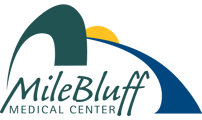Managing Pain: Using Gabapentin (Neurontin)
- Category: Community Resources
- Posted On:
Gabapentin (Neurontin) was originally used for seizures. However, as we have learned more about the medication, we have discovered that it can have a direct and positive effect on the perception of pain. Some things to know about Gabapentin:
Types of pain it may be used for:
Fibromyalgia, neuropathic pain (like diabetic neuropathy), postherpetic pain (the pain resulting from shingles infections), post-operative pain.
Dose:
- To avoid side effects that might hinder continuing therapy, we often start Gabapentin at lower doses.
- Initial doses: 100-300mg daily, usually given at bedtime due to some drowsiness that might go along with the early use of the drug.
- Target doses: 1.2-3.6 grams per day in divided doses. Gabapentin, when at full doses, is often given 3-4 times daily. Sometimes, we give lower doses during the day with higher doses at bedtime to avoid drowsiness during the day.
Administration:
- Can be taken without regard to food. So, take it on an empty stomach or with a meal; it doesn’t matter.
- Capsules can be opened and sprinkled on food to improve your ability to take them if they appear to be too big (don’t crush tablets).
- To maximize the benefit when at full dose, don’t allow more than 12 hours to pass between doses.
Gabapentin slows the release of chemicals from the pre-synaptic nerve that can excite the nerve and cause the sensation of pain. This is important because it means that Gabapentin works directly on your pain to break the cycle of pain and improve your body’s response to the pain.
Issues to be aware of:
- Central Nervous System Depression:
- Most commonly, this includes: dizziness, drowsiness, slowed reactions, fatigue, etc.
- The most dangerous side effect is life-threatening respiratory depression.
- Side effects, especially those involving the central nervous system, are more common when Gabapentin is used with other drugs that might depress the central nervous system as well. These might include:
- alcohol
- opioids like morphine, hydrocodone (Vicodin, Lortab, Norco), hydromorphone (Dilaudid), oxycodone (including oxycontin), fentanyl (including the patches)
- sleep medications
This information is provided by Mile Bluff’s Opioid Stewardship committee. Opioid stewardship is a coordinated program that identifies and uses the best practices to optimize the appropriate use of opioid medications while minimizing the negative impact opioids can have on a patient.
Public education is part of an opioid stewardship program. Throughout the year, we will be sharing information about our stewardship efforts and how we all can do our part to impact the opioid epidemic in our country.



